Strukturwandel und Produktivität
Die Abteilung Strukturwandel und Produktivität untersucht Prozesse strukturellen Wandels, die beispielsweise durch die Dekarbonisierung der Wirtschaft oder technologische Neuerungen erzeugt werden können. Struktureller Wandel beeinflusst maßgeblich die langfristige Entwicklung einer Volkswirtschaft. Er führt zu Aufschwung und Niedergang von Regionen, Wirtschaftszweigen und Betrieben und hat direkte Konsequenzen für den Arbeitsmarkt und die Produktivität der Unternehmen. Wir erforschen die Auswirkungen strukturellen Wandels empirisch mit Hilfe mikroökonometrischer Verfahren. Die Abteilung betreibt Insolvenzforschung und koordiniert das Competitiveness Research Network (CompNet), ein Zentrum für Forschung und Politikberatung rund um die Themen Wettbewerbsfähigkeit und Produktivität.
Im Fokus unserer Arbeit stehen Produktivität, Unternehmensdynamik und Arbeitsmarktergebnisse wie zum Beispiel Beschäftigung und Lohnniveau. Ein besonderes Augenmerk liegt auf der Rolle von Marktmacht auf Produkt- und Arbeitsmärkten. Die Abteilung erforscht gemeinsam mit dem Gewinner des Max-Planck-Humboldt-Forschungspreises von 2019, Professor Ufuk Akcigit (Chicago), die Ursachen der ökonomischen Unterschiede zwischen Ost- und Westdeutschland. Diese wissenschaftlich und wirtschaftspolitisch relevanten Forschungsfragen werden durch die Abteilung im Forschungscluster "Institutionen und soziale Normen" sowie im Forschungscluster "Produktivität und Innovationen" analysiert.
Ihr Kontakt

- Abteilung Strukturwandel und Produktivität
Referierte Publikationen
Ausgewählte Publikationen
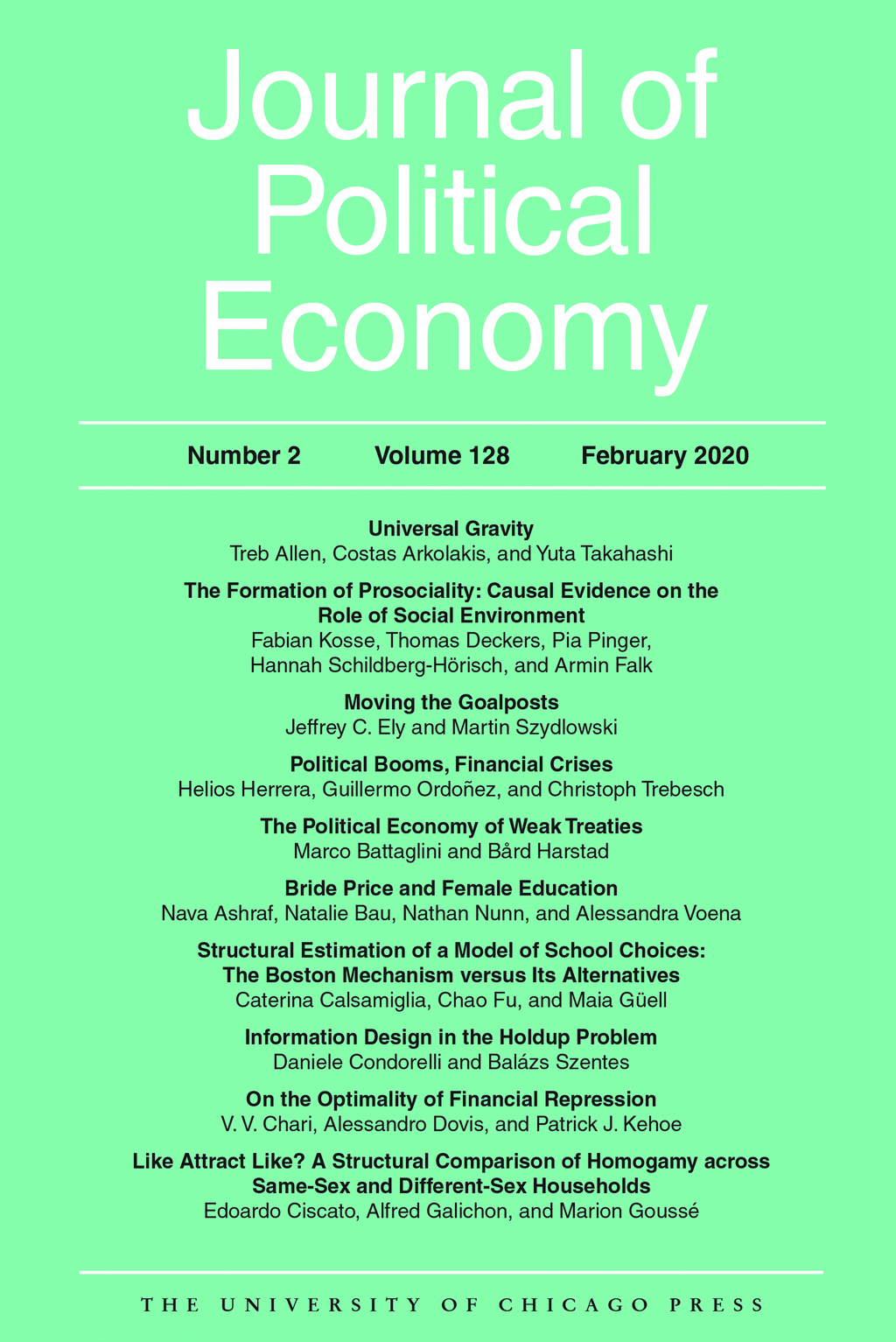
Can Mentoring Alleviate Family Disadvantage in Adolescence? A Field Experiment to Improve Labor-Market Prospects
in: Journal of Political Economy, im Erscheinen
Abstract
We study a mentoring program that aims to improve the labor-market prospects of school-attending adolescents from disadvantaged families by offering them a university-student mentor. Our RCT investigates program effectiveness on three outcome dimensions that are highly predictive of later labor-market success: math grades, patience/social skills, and labor-market orientation. For low-SES adolescents, the mentoring increases a combined index of the outcomes by over half a standard deviation after one year, with significant increases in each dimension. Part of the treatment effect is mediated by establishing mentors as attachment figures who provide guidance for the future. Effects on grades and labor-market orientation, but not on patience/social skills, persist three years after program start. By that time, the mentoring also improves early realizations of school-to-work transitions for low-SES adolescents. The mentoring is not effective for higher-SES adolescents. The results show that substituting lacking family support by other adults can help disadvantaged children at adolescent age.
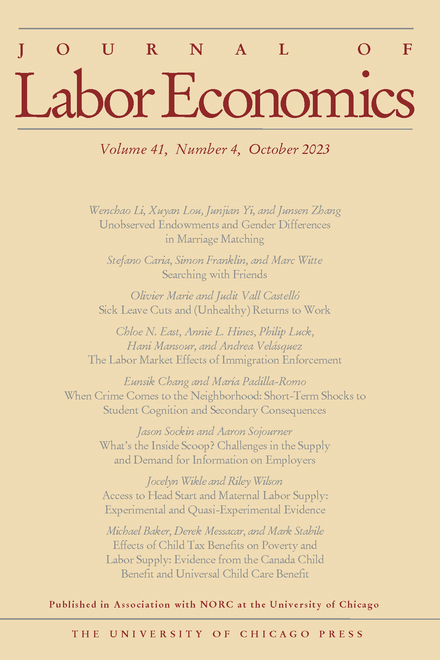
Industry Mix, Local Labor Markets, and the Incidence of Trade Shocks
in: Journal of Labor Economics, im Erscheinen
Abstract
We analyze how skill transferability and the local industry mix affect the adjustment costs of workers hit by a trade shock. Using German administrative data and novel measures of economic distance we construct an index of labor market absorptiveness that captures the degree to which workers from a particular industry are able to reallocate into other jobs. Among manufacturing workers, we find that the earnings loss associated with increased import exposure is much higher for those who live in the least absorptive regions. We conclude that the local industry composition plays an important role in the adjustment processes of workers.
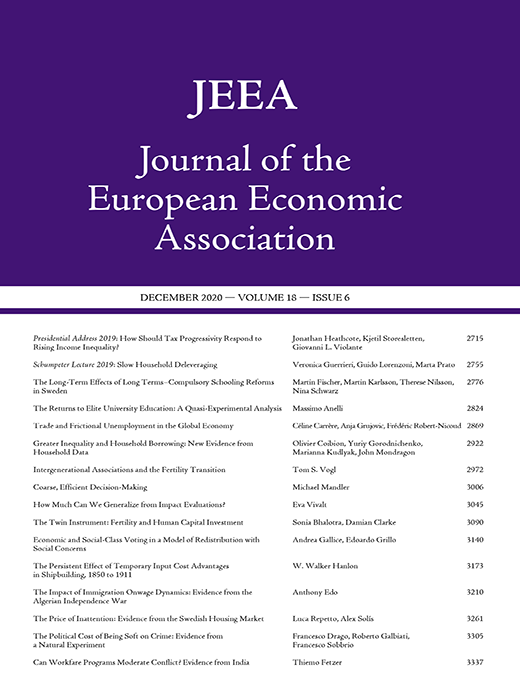
European Firm Concentration and Aggregate Productivity
in: Journal of the European Economic Association, Nr. 2, 2023
Abstract
This paper derives a European Herfindahl–Hirschman concentration index from 15 micro-aggregated country datasets. In the last decade, European concentration rose due to a reallocation of economic activity toward large and concentrated industries. Over the same period, productivity gains from an increasing allocative efficiency of the European market accounted for 50% of European productivity growth while markups stayed constant. Using country-industry variation, we show that changes in concentration are positively associated with changes in productivity and allocative efficiency. This holds across most sectors and countries and supports the notion that rising concentration in Europe reflects a more efficient market environment rather than weak competition and rising market power.
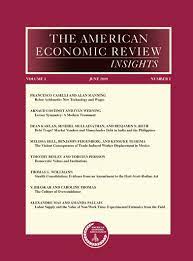
Immigration and Entrepreneurship in the United States
in: American Economic Review: Insights, Nr. 1, 2022
Abstract
Immigration can expand labor supply and create greater competition for native-born workers. But immigrants may also start new firms, expanding labor demand. This paper uses U.S. administrative data and other data resources to study the role of immigrants in entrepreneurship. We ask how often immigrants start companies, how many jobs these firms create, and how these firms compare with those founded by U.S.-born individuals. A simple model provides a measurement framework for addressing the dual roles of immigrants as founders and workers. The findings suggest that immigrants act more as "job creators" than "job takers" and that non-U.S. born founders play outsized roles in U.S. high-growth entrepreneurship
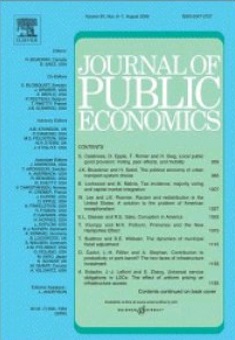
The Place-based Effects of Police Stations on Crime: Evidence from Station Closures
in: Journal of Public Economics, March 2022
Abstract
Many countries consolidate their police forces by closing down local police stations. Police stations represent an important and visible aspect of the organization of police forces. We provide novel evidence on the effect of centralizing police offices through the closure of local police stations on crime outcomes. Combining matching with a difference-in-differences specification, we find an increase in reported car theft and burglary in residential properties. Our results are consistent with a negative shift in perceived detection risks and are driven by heterogeneous station characteristics. We can rule out alternative explanations such as incapacitation, crime displacement, and changes in police employment or strategies at the regional level. We argue that criminals are less deterred due to a lower visibility of the local police.
Arbeitspapiere
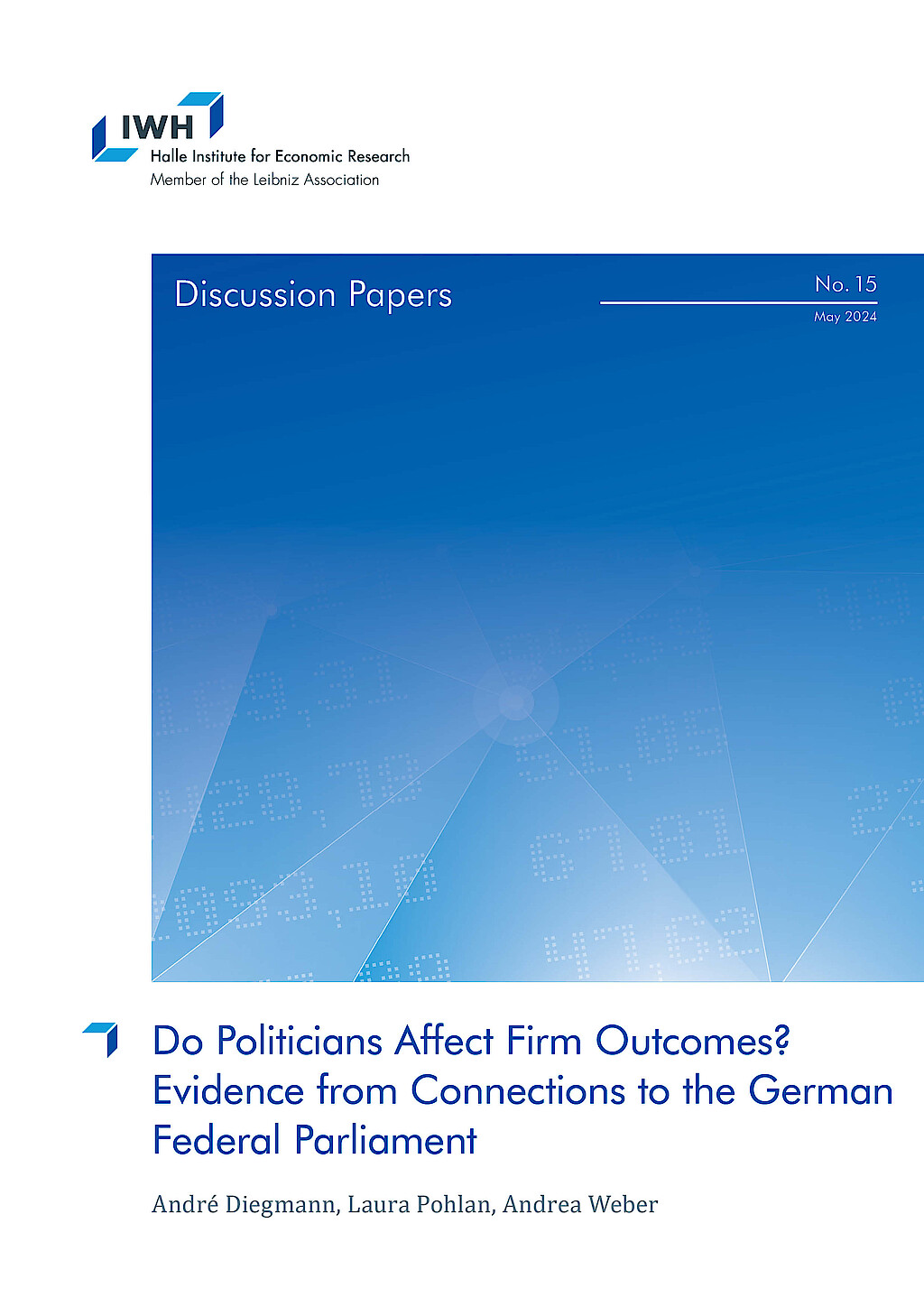
Do Politicians Affect Firm Outcomes? Evidence from Connections to the German Federal Parliament
in: IWH Discussion Papers, Nr. 15, 2024
Abstract
We study how connections to German federal parliamentarians affect firm dynamics by constructing a novel dataset to measure connections between politicians and the universe of firms. To identify the causal effect of access to political power, we exploit (i) new appointments to the company leadership team and (ii) discontinuities around the marginal seat of party election lists. Our results reveal that connections lead to reductions in firm exits, gradual increases in employment growth without improvements in productivity. The economic effects are mediated by better credit ratings while access to subsidies or procurement contracts are documented to be of lower importance.
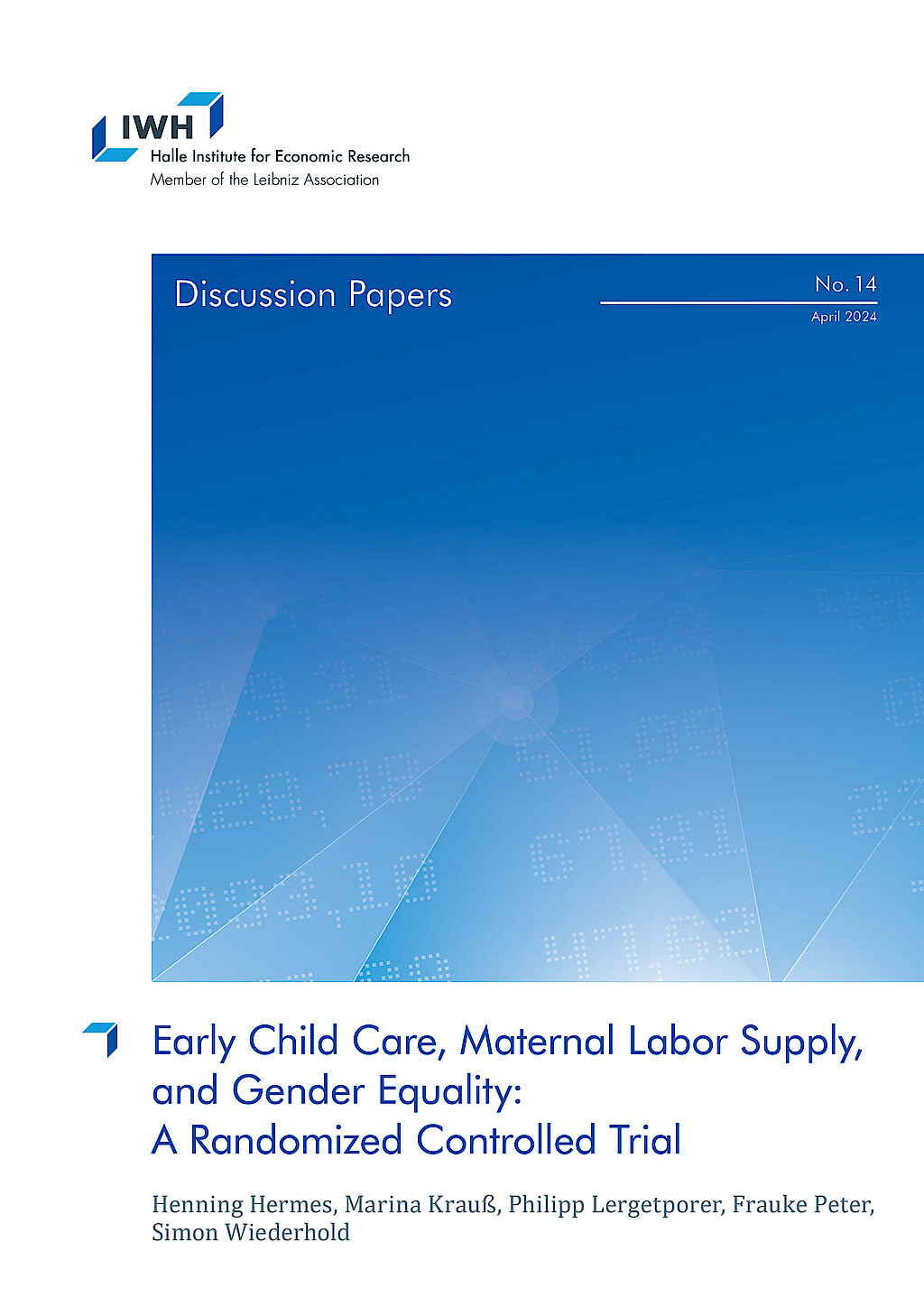
Early Child Care, Maternal Labor Supply, and Gender Equality: A Randomized Controlled Trial?
in: IWH Discussion Papers, Nr. 14, 2024
Abstract
We provide experimental evidence that enabling access to universal early child care increases maternal labor supply and promotes gender equality among families with lower socioeconomic status (SES). Our intervention offers information and customized help with child care applications, leading to a boost in child care enrollment among lower-SES families. 18 months after the intervention, we find substantial increases in maternal full-time employment (+160%), maternal earnings (+22%), and household income (+10%). Intriguingly, the positive employment effects are not only driven by extended hours at child care centers, but also by an increase in care hours by fathers. Gender equality also benefits more broadly from better access to child care: The treatment improves a gender equality index that combines information on intra-household division of working hours, care hours, and earnings by 40% of a standard deviation, with significant increases in each dimension. For higher-SES families, we consistently observe negligible, insignificant treatment effects.
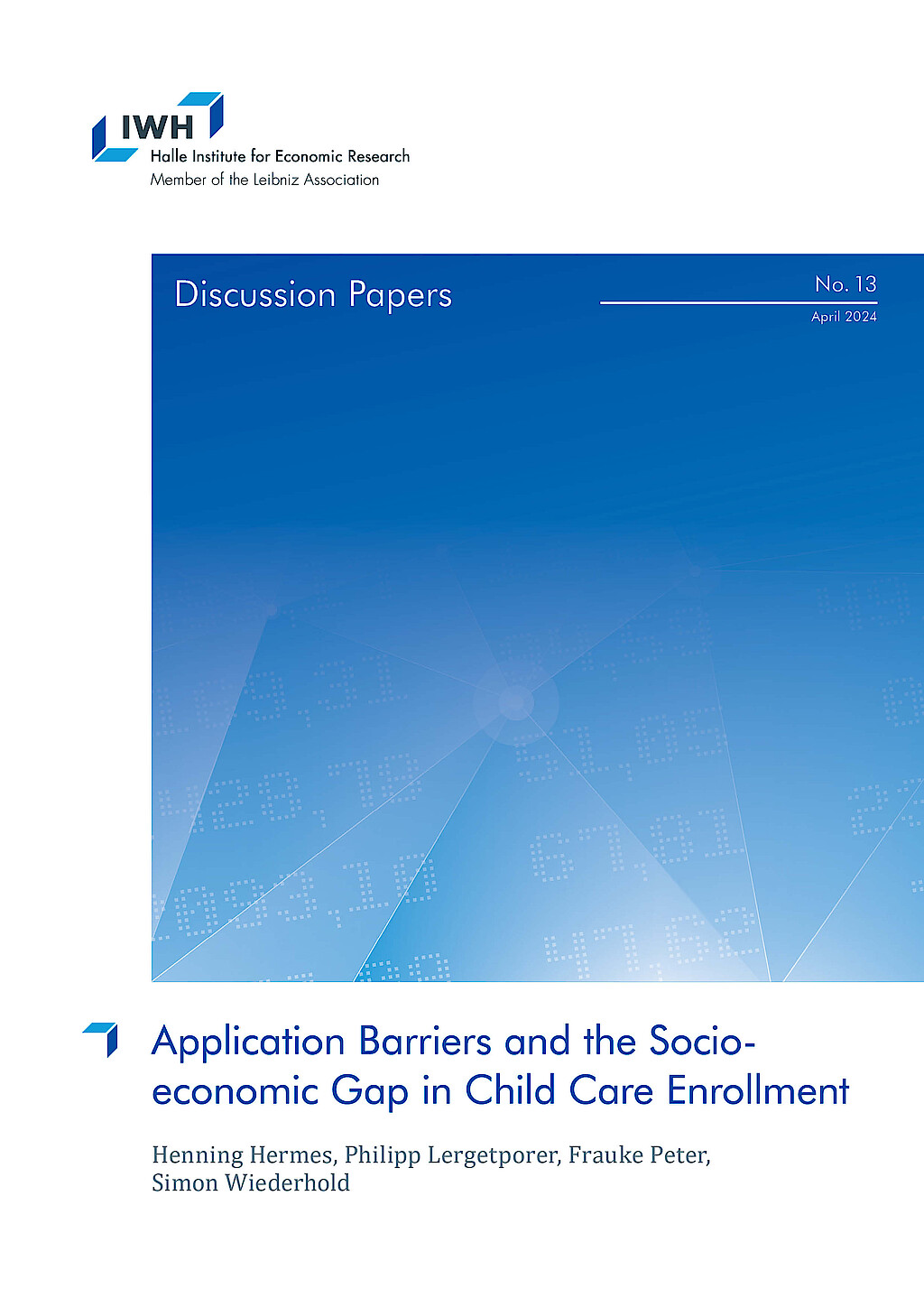
Application Barriers and the Socioeconomic Gap in Child Care Enrollment
in: IWH Discussion Papers, Nr. 13, 2024
Abstract
Why are children with lower socioeconomic status (SES) substantially less likely to be enrolled in child care? We study whether barriers in the application process work against lower-SES children — the group known to benefit strongest from child care enrollment. In an RCT in Germany with highly subsidized child care (N = 607), we offer treated families information and personal assistance for applications. We find substantial, equity-enhancing effects of the treatment, closing half of the large SES gap in child care enrollment. Increased enrollment for lower-SES families is likely driven by altered application knowledge and behavior. We discuss scalability of our intervention and derive policy implications for the design of universal child care programs.
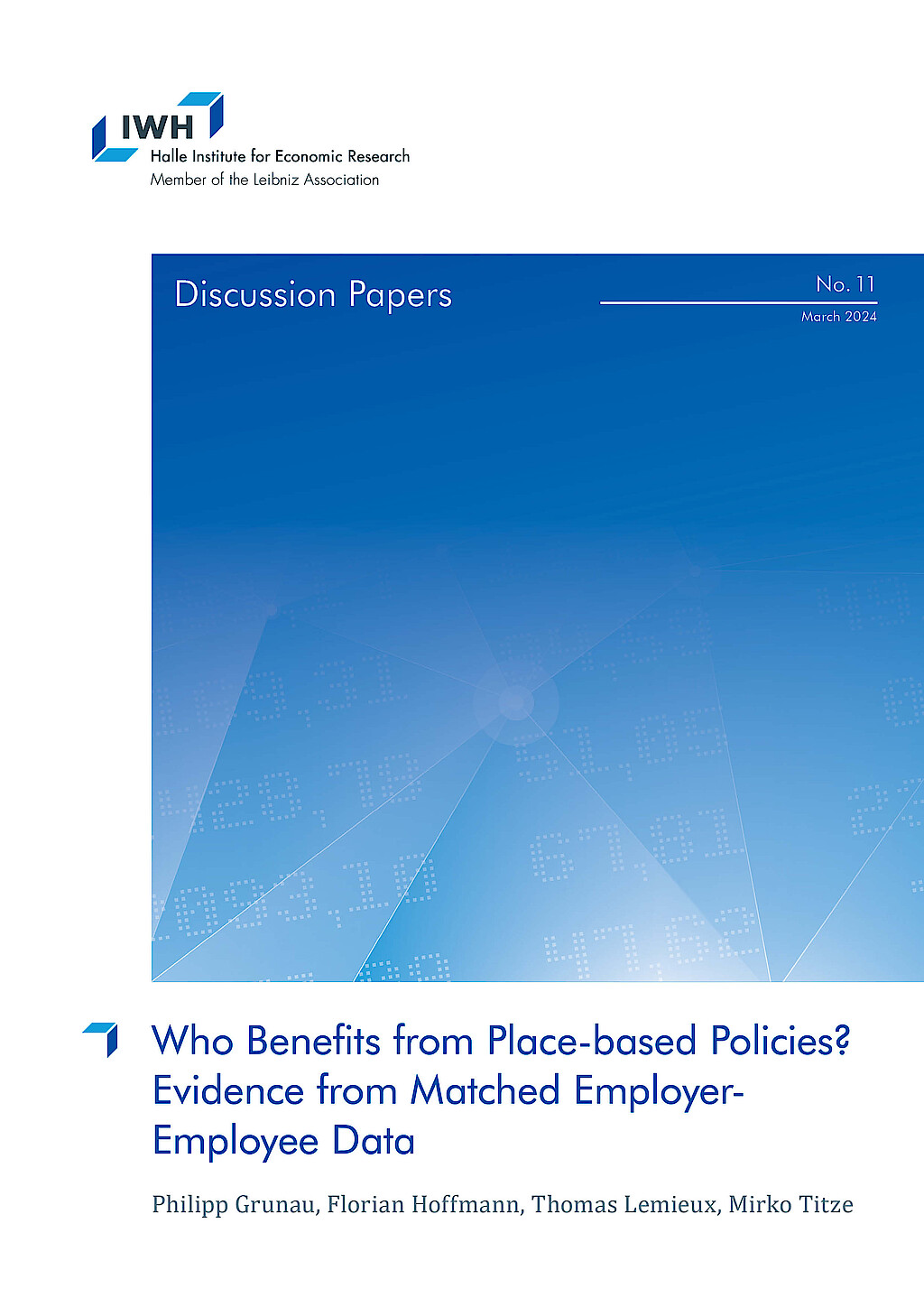
Who Benefits from Place-based Policies? Evidence from Matched Employer-Employee Data
in: IWH Discussion Papers, Nr. 11, 2024
Abstract
We study the wage and employment effects of a German place-based policy using a research design that exploits conditionally exogenous EU-wide rules governing the program parameters at the regional level. The place-based program subsidizes investments to create jobs with a subsidy rate that varies across labor market regions. The analysis uses matched data on the universe of establishments and their employees, establishment-level panel data on program participation, and regional scores that generate spatial discontinuities in program eligibility and generosity. These rich data enable us to study the incidence of the place-based program on different groups of individuals. We find that the program helps establishments create jobs that disproportionately benefit younger and less-educated workers. Funded establishments increase their wages but, unlike employment, wage gains do not persist in the long run. Employment effects estimated at the local area level are slightly larger than establishment-level estimates, suggesting limited spillover effects. Using subsidy rates as an instrumental variable for actual subsidies indicates that it costs approximately EUR 25,000 to create a new job in the economically disadvantaged areas targeted by the program.

Does Information about Inequality and Discrimination in Early Child Care Affect Policy Preferences?
in: IWH Discussion Papers, Nr. 2, 2024
Abstract
We investigate public preferences for equity-enhancing policies in access to early child care, using a survey experiment with a representative sample of the German population (n ≈ 4, 800). We observe strong misperceptions about migrant-native inequalities in early child care that vary by respondents’ age and right-wing voting preferences. Randomly providing information about the actual extent of inequalities has a nuanced impact on the support for equity-enhancing policy reforms: it increases support for respondents who initially underestimated these inequalities, and tends to decrease support for those who initially overestimated them. This asymmetric effect leads to a more consensual policy view, substantially decreasing the polarization in policy support between under- and overestimators. Our results suggest that correcting misperceptions can align public policy preferences, potentially leading to less polarized debates about how to address inequalities and discrimination.


































